Uncovering a New Molecular Driver in Endometriosis
The transcription factor SOX18 (SRY-related high-mobility group box 18) has been identified as a key contributor to the pathogenesis of endometriosis, according to a new study published in the Journal of Translational Medicine by a team from The Second Affiliated…
Key Points Lay SummaryCervix as a Missing Link in Endometriosis Pathogenesis
The cervix, a 4 cm-long, 2.5–3 cm-wide segment at the lower end of the uterus, plays multiple roles in women’s reproductive health. Lined with mucus rich in antimicrobial peptides, immunoglobulins, immune cells, and exfoliated epithelial cells, it acts as both…
Key Points Lay SummaryCould sexual activity during menses be a risk factor in endometriosis?
Italian researchers recently published a literature review in Women’s Health exploring the potential role of endometriosis and menstrual sexual activity. The retrograde menstruation theory, first proposed in the early 20th century, remains a popular hypothesis suggesting that menstrual debris contribute to the…
Key Points Lay SummaryUnique features of endometrial cells in endometriosis
Researchers from the University of Texas, San Antonio, have published a detailed study on the properties of endometrial cell components in relation to endometriosis, entitled "Hypersensitive intercellular responses of endometrial stromal cells drive invasion in endometriosis", in the scientific journal eLife. The…
Key Points Lay SummaryRetrograde Menstruation Theory Through Müllerian Anomalies
The pathogenesis of endometriosis is still under debate. Sampson also described this condition as "developmentally misplaced endometrial tissue" in 1925. To evaluate the theories of pathogenesis, Vercellini et al. from the Academic Center for Research on Adenomyosis and Endometriosis at…
Key Points Lay SummaryEndometriosis vs. adenomyosis : is there a common pathogenesis ?
This is a collaborative review on the pathophysiology of adenomyosis and endometriosis by academicians of the University of Leicester, UK; Fudan University, Shanghai, China and Sapienza University of Rome, Italy, published in a recent issue of “Biomolecules”. The pathophysiology of…
Key Points Lay SummaryThe Importance of "uterine adenogenesis" in endometriosis development
Understanding the complex pathogenetic mechanisms underlying endometriosis has been a big challenge. Several studies have demonstrated that the eutopic and ectopic endometrium exhibit distinct characteristics. Researchers led by Signorile et al. from Italy conducted a review of the recent developments…
Key Points Lay SummaryHypoxia and endometriosis: A review of mechanisms
Various mechanisms have been suggested to explain the development of endometriosis lesions. One of these is hypoxia, which can induce changes in endometrial cells, but the exact mechanism is not yet clear. Zhou et al from China wrote a review…
Key Points Lay SummaryIs the pathogenesis of endometriosis hidden in immune-related gene profiles ?
Yanan He and colleagues from the Department of Gynecology, Harbin Medical University, China have published their manuscript on potential immune markers in endometriosis in a recent issue of “Journal of Immunology Research” Pathophysiologic mechanisms involving endometriosis are complicated and have…
Key Points Lay SummaryIron and toxic environmental elements in ovarian endometriomas
It is well-known that the growth of endometriotic lesions is estrogen-dependent and supported by inflammatory processes. In addition to oxidative stress, it is believed that several other factors, including chemicals and environmental factors, and genetic predisposition may play a potential…
Key Points Lay SummaryOrganizing structural protein Ezrin and its active form in endometriosis biopsies
Dr. Alessandra Peloggia and colleagues from Brazil have published their results on immunostaining of Ezrin protein and its phosphorylated active form in endometrial tissues in a recent issue of “Clinics” Possible factors on endometrial cell implantation and proliferation in the…
Key Points Lay SummaryAn important enigmatic promoter of endometriosis: immune dendritic cells
Dr. Larinha and associates from a Brasilian academic center have published their comprehensive review on the role of immune dendritic cells in the pathogenesis of endometriosis in a recent issue of the "Journal of Reproductive Immunology". Antigen-presenting dendritic cells of…
Key Points Lay SummaryFull understanding the role of nervous system in endometriosis could yield new gateways to novel therapeutic approaches
Dr. Velho and associates from Berlin, Germany have recently published their comprehensive review on the role of the nervous system in endometriosis in a recent issue of “International Journal of Molecular Sciences”. Understanding the role of the peripheral nervous system…
Key Points Lay SummaryIs breastfeeding beneficial to endometriosis pain?
Dr. Porta team from Italian academic centers have recently published their research in “International Journal of Environmental Research and Public Health” on breastfeeding mothers who were under follow-up for histologically proven endometriosis. The hormonal milieu is believed to have an important…
Key Points Lay SummaryMolecular alterations in endometriosis pathogenesis
Endometriosis has been in our lives for decades, however little is known about its pathogenesis making it hard to diagnose and manage. A review study conducted by Balasubramanian et al. from India reveals all the characteristics and the underlying conditions…
Key Points Lay SummaryEtiopathogenesis of Endometriosis and Links with Endometrial Cancer
Professor Terzic and colleagues from the Medical School of Nazarbayev University, Kazakhstan published their review on the molecular aspects of endometriosis and endometrial cancer in “International Journal of Molecular Sciences”. The etiopathogenesis of endometriosis has remained controversial, with recent studies…
Key Points Lay SummaryEndometriosis from the "EVOLUTIONARY" point of view
Natalie Dinsdale and associates from the Canadian Simon Fraser University Department of Biological Sciences published a critical review titled “ The evolutionary biology of endometriosis” in a recent issue of the journal “Evolution, medicine and public health”. This review focuses…
Key Points Lay SummaryMyeloid-Derived Suppressor Cells are gaining importance in endometriosis
Dr. Wertel and associates from Polish academic centers published their sentimental review paper on the role of "Myeloid-Derived Suppressor Cells" in human diseases, in a recent issue of Cells. Endometriosis, the most common gynecological disease affecting about 10% of women globally,…
Key Points Lay SummaryFallopian tubes and endometriosis
There are multiple theories to explain the pathogenesis of endometriosis, among which the most popular one is Sampson's retrograde menstruation theory. The role of endometrial stem cells/progenitors are widely studied to support the origin of ectopic lesions in recent decades.…
Key Points Lay SummaryEstrogen Receptors and Endometriosis: What do we know now?
It has been well known that endometriosis is closely associated with steroid hormone metabolism and pathways. Estradiol promotes the growth and progression of endometriotic tissue, together with the associated inflammation and pain-related symptoms. Excess estradiol in endometriosis is mainly produced…
Key Points Lay SummaryOxidative stress leads to elevated cytokines, excessive structural damage and angiogenesis
Endometriosis is characterized by elevated intracellular reactive oxygen species, which is then believed to upregulate inflammatory cytokines. Reactive oxygen species also regulate the activation of nuclear factor kappa-light-chain-enhancer of activated B cells (NF-κB), which is closely linked with immune responses.…
Key Points Lay SummaryUnderstanding endocannabinoid system in endometriosis
Endocannabinoids and their receptors are expressed throughout the body but have only been recently studied in depth since endocannabinoids were being discovered in 1992. In the female reproductive system, the cannabinoid receptor is expressed in the endometrium, the myometrium, the…
Key Points Lay SummaryA comprehensive review on the etiopathogenesis of endometriosis
Endometriosis, being a heterogeneous disease has a highly complex etiopathogenesis. A multicenter comprehensive review on this important subject from Italy, Germany, and the USA by Lagana and associates, was recently published in the "International Journal of Molecular Sciences" an open-access journal. Computerized…
Key Points Lay SummaryIs there an association between endometriosis and sexual activity during menstruation ?
This recent case-control study with 185 women having endometriosis and 370 women as a control group was conducted in Tebriz University, Iran by Dr. Mollazadeh and associates. Contemporarily, retrograde menstruation is a valid theory for disseminating endometrial tissue to the…
Key Points Lay SummaryImportance of monocytic myeloid derived supressor cells in endometriosis
Myeloid-derived suppressor cells MDSCs are immature myeloid cells that play a major role in immunosuppression in various disease processes. Ya Sun and associates have investigated these cells in endometriosis utilizing various laboratory methods. published their results in the "American Journal of…
Key Points Lay SummaryAdditional research in understanding the causative link between Notch signaling and endometriosis
Dustin M. Brown and associates from the University of Arkansas for Medical Sciences published their unique complex molecular research in the Journal of the Endocrine Society. This study group previously showed that decreased expression of the progesterone receptor (PGR) resulted from…
Key Points Lay SummaryEndometriosis and female pelvic pain in all aspects
Endometriosis is defined as the localization of endometrial glandular and stromal tissue outside the uterine cavity. The prevalence of the disease ranges between 6-10% in reproductive-aged women. However, endometriosis is more frequently encountered in women with chronic pelvic pain and…
Key Points Lay SummaryA new theory in the pathogenesis of endometriosis
Koninckx et. al., from various countries, have conducted this review, which will be published in Fertility and Sterility. Endometriosis is known for a century. The disease has a variable course in a patient, which may include pain, infections, and infertility.…
Key Points Lay SummaryEndometriosis in adolescents
Dr. Mama S. T. from Cooper University Hospital, Camden, New Jersey, USA, recently has published his review on advances in the management of endometriosis in the adolescent in the journal “Current Opinion Obstetrics and Gynecology”. In adolescence, there is a…
Key Points Lay SummaryThe pathogenesis of endometriosis : New discoveries with clinical impact
In this recent review article that appeared in Current Women’s Health Reviews, compiled by researchers from the Department of Molecular Cell Biology and Human Genetics, Institute of Cell Biology and Neuroscience Frankfurt, Germany the following important points in regard to the molecular and cellular pathogenesis of…
Key Points Lay SummaryEndometriosis in a Man as a Rare Source of Abdominal Pain
Endometriosis occurs when a tissue resembling endometrial glands and stroma grows in ectopic sites, commonly causing infertility and pain. Endometriosis has largely been found in women of reproductive age. However, in extremely rare cases, it is also found in men…
Key Points Lay SummaryDirect shedding of endometrioma contents visualized by ultrasonography
Endometriosis is one of the leading causes of chronic pelvic pain in women during their childbearing years. Researchers from Italy have recently published a case report in the European Journal of Obstetrics & Gynecology and Reproductive Biology observing the direct shedding of endometriotic…
Key Points Lay SummaryEndocrine and inflammatory factors in current understanding of endometriosis
There are three forms of endometriosis: peritoneal, ovarian, and deep infiltrating. All three forms consist of endometriotic lesions containing endometrial glands, stroma, nerves, blood vessels, and inflammatory cells. Endometriosis symptoms can be accounted by these elements and the involving organs.…
Key Points Lay SummaryIndependent development of endometrial epithelium and stroma within the same endometriosis
Endometriosis is one of the leading causes of chronic pelvic pain in women during their childbearing years. A popular theory for the pathogenesis of endometriosis posits that circulating progenitor cells differentiate into the endometrial stroma and glandular tissue once they…
Key Points Lay SummaryInflammatory mediators in endometriosis pathogenesis
Proinflammatory cytokines play an important function in mediating inflammatory reactions in chronic inflammatory diseases and in endometriosis. IL-32 is a new proinflammatory cytokine, and can also induce other proinflammatory cytokines in the body such as Tumour Necrosis Factor-α (TNF-α) and…
Key Points Lay SummaryEndometriosis pathogenesis through the lens of reactive oxygen species
Oxidative stress caused by reactive oxygen species is an essential factor in endometriosis pathogenesis. The harmful effects of reactive oxygen species have been implicated in many diseases, although the multiple biological changes caused is unclear especially in endometriosis. The article…
Key Points Lay SummaryMitogen-Activated Protein Kinase p38 modulates Inflammation in Endometriosis
The p38 mitogen-activated protein kinase (MAPK) is a serine/threonine kinase, which transduces signals within the cell in response to various environmental stimuli. In doing so, it mediates intracellular signaling of cytokine production, cell proliferation, and apoptosis amongst many other cellular…
Key Points Lay SummaryThe Potential Molecular Mechanisms that Drive Endometriosis Progression
Endometriosis is a mysterious disease in that the exact mechanism that causes the illness is still at large. Yang et al. recently published a paper in the European Review for Medical and Pharmacological Sciences that hopes to elucidate the molecular…
Key Points Lay SummaryThe Role of IL-35 in the Pathogenesis of Endometriosis
The molecular mechanism that drives endometriosis remains elusive to this day. Zhang et al believe that interleukin 35 (IL-35) plays a role in the pathogenesis of the disease. Their recent publication in Reproductive Sciences titled “Upregulation of Interleukin 35 in…
Key Points Lay Summary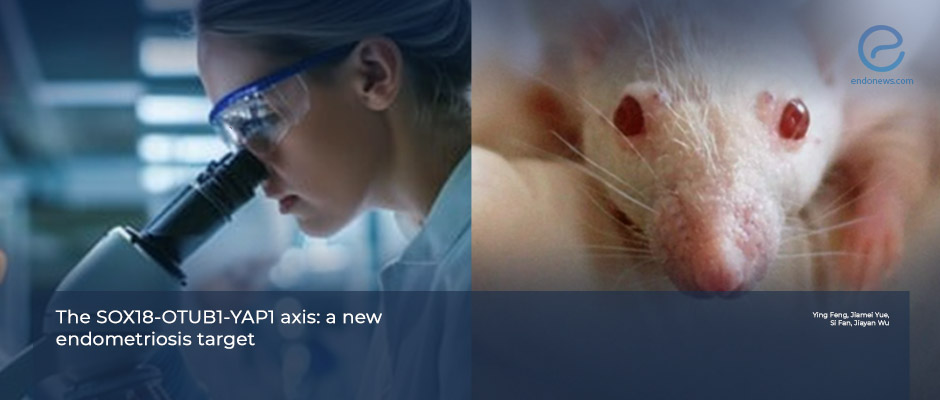
 By Özge Özkaya
By Özge Özkaya
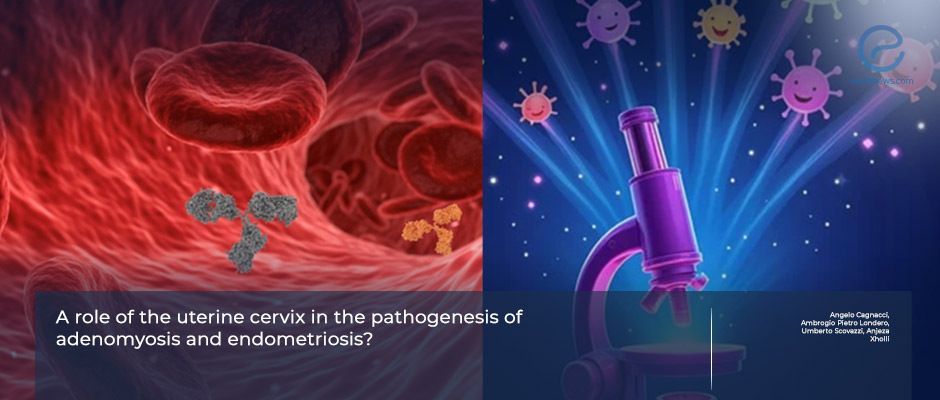
 By Selma Oransay
By Selma Oransay
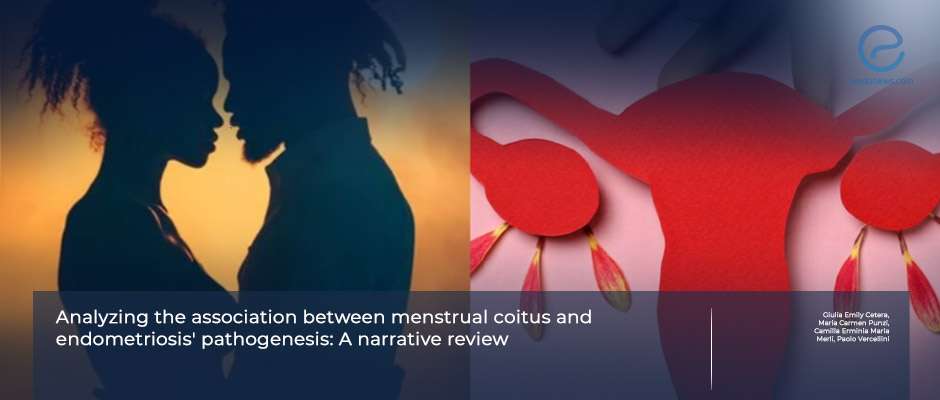
 By Nasuhi Engin Aydin
By Nasuhi Engin Aydin
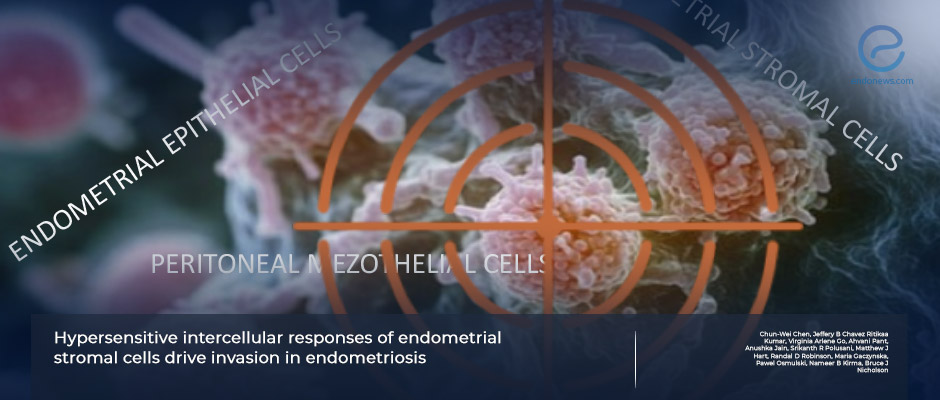
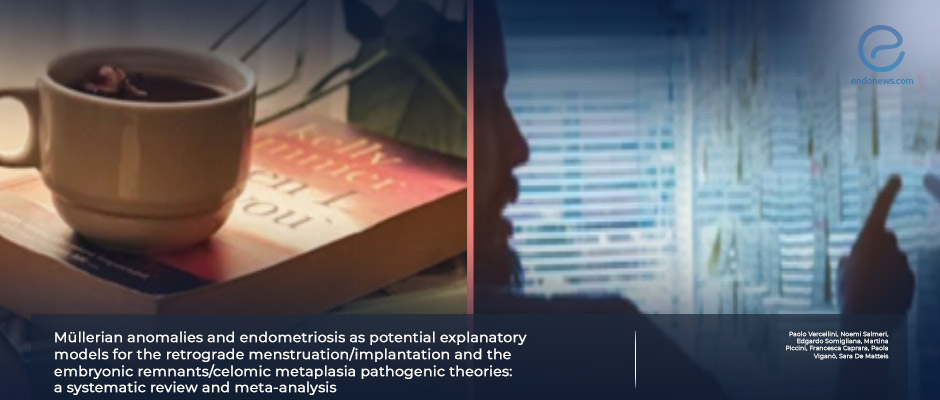


 By Eylül GÜN
By Eylül GÜN













 By Yu Yu
By Yu Yu







 By Hale Goksever Celik
By Hale Goksever Celik

 By Serdar Balci
By Serdar Balci

 By Irem Onur
By Irem Onur


 By Dr. Youngran Park
By Dr. Youngran Park

 By Murat Osman
By Murat Osman
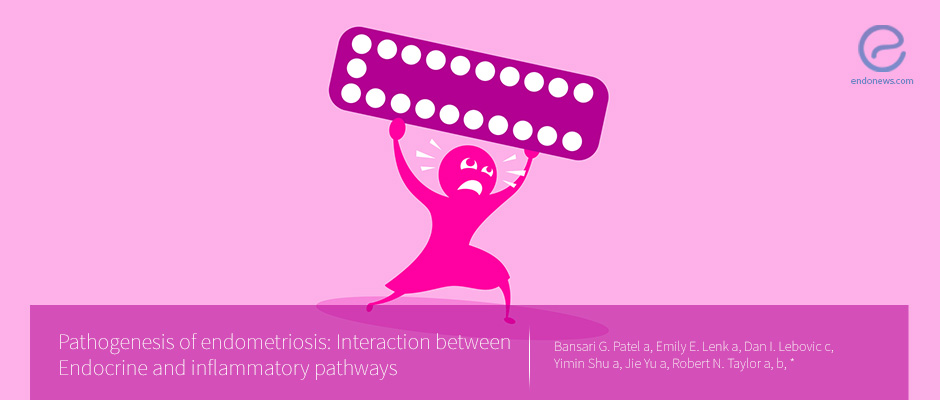

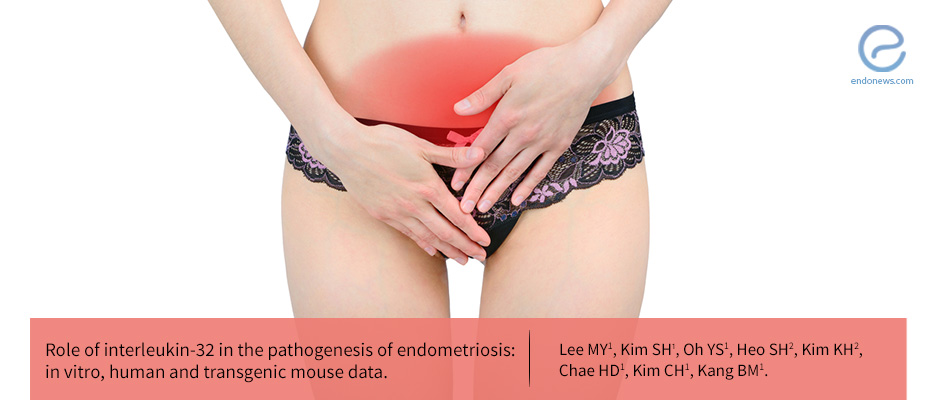



 By Kasthuri Nair
By Kasthuri Nair
